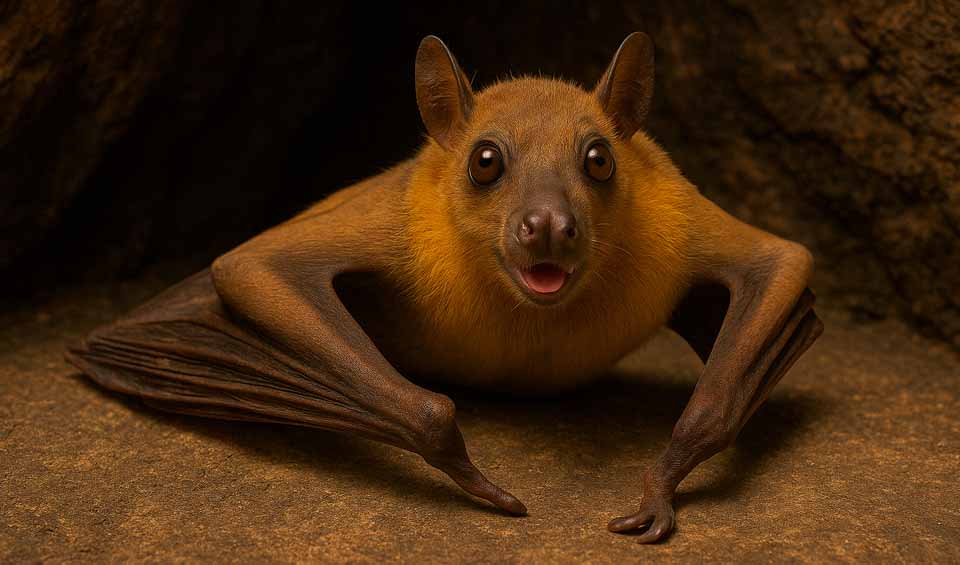A fascinating species of fruit bat found only on the island of Madagascar. As one of the island’s few native fruit bats, it plays a vital role in maintaining the health of Madagascar’s forests by helping to pollinate flowers and disperse seeds — especially from fruiting trees that rely on bats to spread their seeds across long distances. With its large, dark eyes, long wings, and fox-like face, the Madagascan rousette has a gentle and almost dog-like appearance, which is why fruit bats are sometimes nicknamed “flying foxes.”
The Madagascan rousette’s fur is generally brownish or gray, sometimes with lighter coloring on the belly, and its wings are dark and leathery. Unlike insect-eating bats that use echolocation by emitting sound from their mouths or noses, rousettes are one of the few fruit bats that use a unique form of echolocation by clicking their tongues. This helps them navigate in complete darkness inside caves or dense forests, though they also rely heavily on their excellent eyesight and sense of smell to find ripe fruit.
Madagascan rousettes are mostly nocturnal and highly social, roosting in large colonies in caves or hollow trees during the day and heading out at night to feed. They eat a variety of fruits, nectar, and flowers, making them important for forest regeneration. As they feed, they drop seeds or pass them through their digestive systems, spreading them far and wide — especially valuable in fragmented forests. Because they can fly long distances, they help connect ecosystems that would otherwise remain isolated.
Distribution
 Madagascar
MadagascarAnything we've missed?
Help us improve this page by suggesting edits. Glory never dies!
Suggest an editGet to know me
Terrestrial / Aquatic
Altricial / Precocial
Polygamous / Monogamous
Dimorphic (size) / Monomorphic
Active: Diurnal / Nocturnal
Social behavior: Solitary / Pack / Colony
Diet: Carnivore / Frugivore / Omnivore / Piscivorous / Insectivore
Migratory: Yes / No
Domesticated: Yes / No
Dangerous: Yes / No




